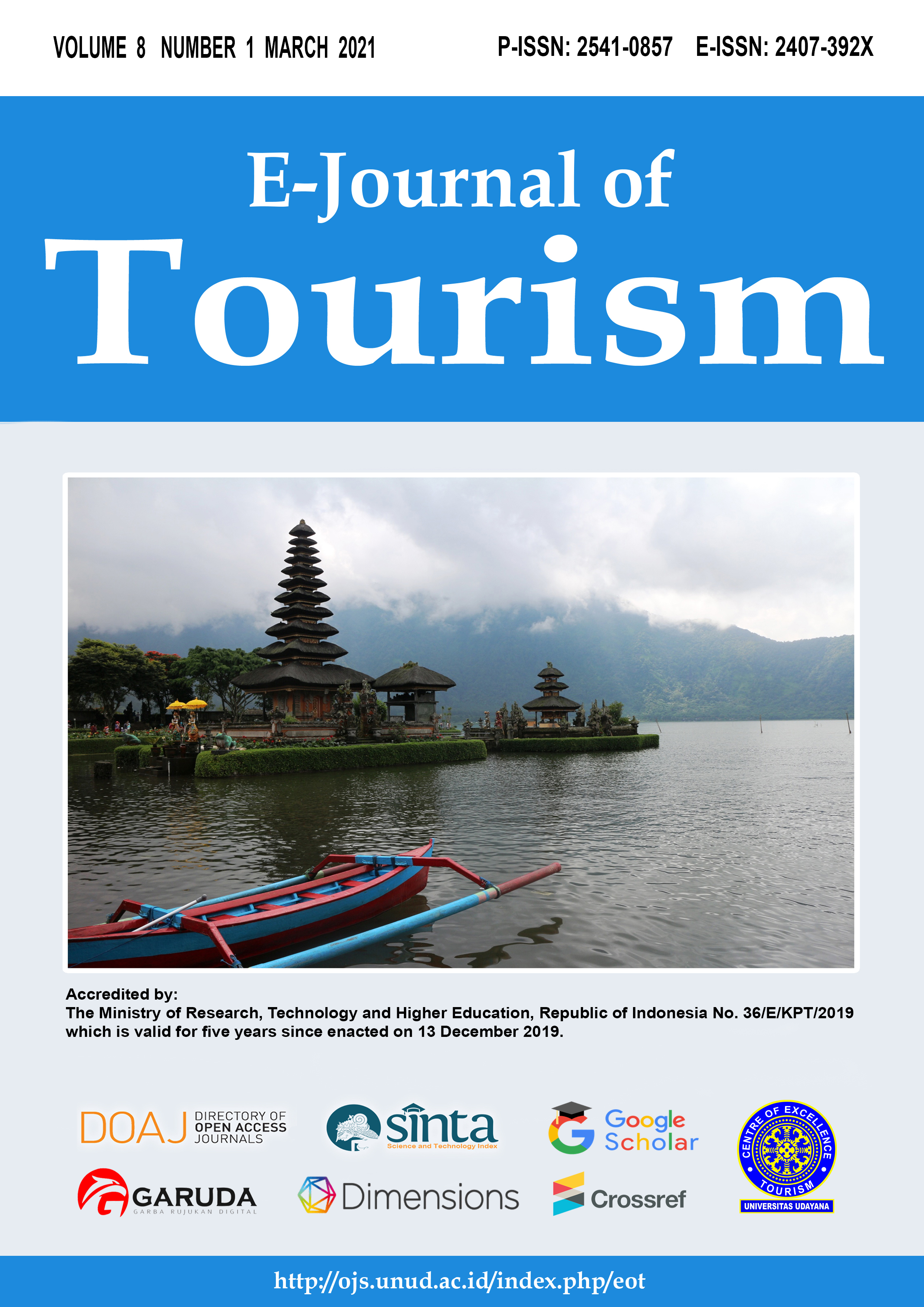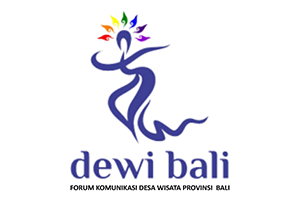Shopping Tourism Development Through Top Five Products in Yogyakarta City, Indonesia
Abstract
Yogyakarta is a city tourism that has no natural tourism potential. Shopping tourism can become an alternative strategy to increase the expenditure and length of tourists stay in Yogyakarta. The research is a qualitative research. The research aims to examine shopping tourism products in Yogyakarta. The research attempts to identify top five products as the main magnetism of shopping tourism in Yogyakarta. Data analysis is conducted through reduction techniques. The research obtained top five culinary products, they are Gudeg, Bakpia, Bakmi Jawa, Kopi Joss, and Kipo, while the top five souvenir products are Batik, Silver, Dagadu, Wayang, and Miniature.
Downloads
References
Christiansen, T. and Snepenger, D. J. (2002) ‘Is it the mood or the mall that encourages tourists to shop’, Journal of Shopping Center Research, 9(1), pp. 7–26.
Dey, B. and Sarma, K. . (2012) ‘Influences on Souvenirs Buying Intentions of Tourists in Craft-Rich Regions, ASEAN.’, Journal on Hospitality and Tourism, 11, pp. 66–85.
Dimanche, F. (2003) ‘The Louisiana tax free shopping program for international visitors: a case study’, Journal of Travel Research, 41(3), pp. 311–314.
Gentry, C. R. (2001) ‘The Sport of Shopping’, China Store Age, 77(9).
Government Tourism Office of Special Region of Yogyakarta (2016) Report of Yogyakarta City Travelers Expenditure Analysis in 2016.
Government Tourism Office of Special Region of Yogyakarta (2017) Report of Yogyakarta City Travelers Expenditure Analysis in 2017. Available at: https://drive.google.com/file/d/1ksEI47rgC5iRPUzpEiGN94nPU8poLQUn/view.
Government Tourism Office of Special Region of Yogyakarta (2018) Report of Yogyakarta City Travelers Expenditure Analysis in 2018. Available at: https://drive.google.com/file/d/1ksEI47rgC5iRPUzpEiGN94nPU8poLQUn/view.
Hsieh, A.-T. and Chang, J. (2006) ‘Shopping and tourist night markets in Taiwan’, Tourism management, 27(1), pp. 138–145.
Huang, S. and Hsu, C. H. C. (2009) ‘Effects of travel motivation, past experience, perceived constraint, and attitude on revisit intention’, Journal of travel research, 48(1), pp. 29–44.
LeHew, M. L. A. and Wesley, S. C. (2007) ‘Tourist shoppers’ satisfaction with regional shopping mall experiences’, International Journal of Culture, Tourism and Hospitality Research.
Lin, Y.-H. and Lin, K. Q. R. (2006) ‘Assessing mainland Chinese visitors’ satisfaction with shopping in Taiwan’, Asia Pacific Journal of Tourism Research, 11(3), pp. 247–268.
Reisinger, Y. and Turner, L. W. (2002) ‘The determination of shopping satisfaction of Japanese tourists visiting Hawaii and the Gold Coast compared’, Journal of Travel Research, 41(2), pp. 167–176.
Rosenbaum, M. S. and Spears, D. L. (2005) ‘Who buys that? Who does what? Analysis of cross-cultural consumption behaviours among tourists in Hawaii’, Journal of Vacation Marketing, 11(3), pp. 235–247.
Saayman, M. and Saayman, A. (2012) ‘Shopping tourism or tourists shopping? A case study of South Africa’s African tourism market’, Tourism Economics, 18(6), pp. 1313–1329.
Swanson, K. K. (2004) ‘Tourists’ and retailers’ perceptions of souvenirs’, Journal of Vacation Marketing, 10(4), pp. 363–377.
Swanson, K. K. and Horridge, P. E. (2006) ‘Travel motivations as souvenir purchase indicators’, Tourism management, 27(4), pp. 671–683.
Tömöri, M. (2010) ‘Investigating shopping tourism along the borders of Hungary—a theoretical perspective’, GeoJournal of Tourism and Geosites, 6(2), pp. 202–210.
Tosun, C. et al. (2007) ‘Tourist shopping experiences and satisfaction’, International Journal of Tourism Research, 9(2), pp. 87–102.
Turner, L. W. and Reisinger, Y. (2001) ‘Shopping satisfaction for domestic tourists’, Journal of Retailing and consumer services, 8(1), pp. 15–27.
Vasheghani-Farahani, F., Esfandiar, K. and Tajzadeh-Namin, A. (2014) ‘Effective factors on souvenir purchase: the case of foreign tourists’ viewpoint in Tehran city’.
Way, K. A. and Robertson, L. J. (2013) ‘Shopping and tourism patterns of attendees of the bikes, blues & BBQ festival’, Journal of Hospitality Marketing & Management, 22, pp. 116–133.
Wilkins, H. (2011) ‘Souvenirs: What and why we buy’, Journal of Travel Research, 50(3), pp. 239–247.
Wong, J. and Law, R. (2003) ‘Difference in shopping satisfaction levels: A study of tourists in Hong Kong’, Tourism management, 24(4), pp. 401–410.

This work is licensed under a Creative Commons Attribution 4.0 International License.
The copyright of the received article shall be assigned to the journal as the publisher of the journal. The intended copyright includes the right to publish the article in various forms (including reprints). The journal maintains the publishing rights to the published articles.




















